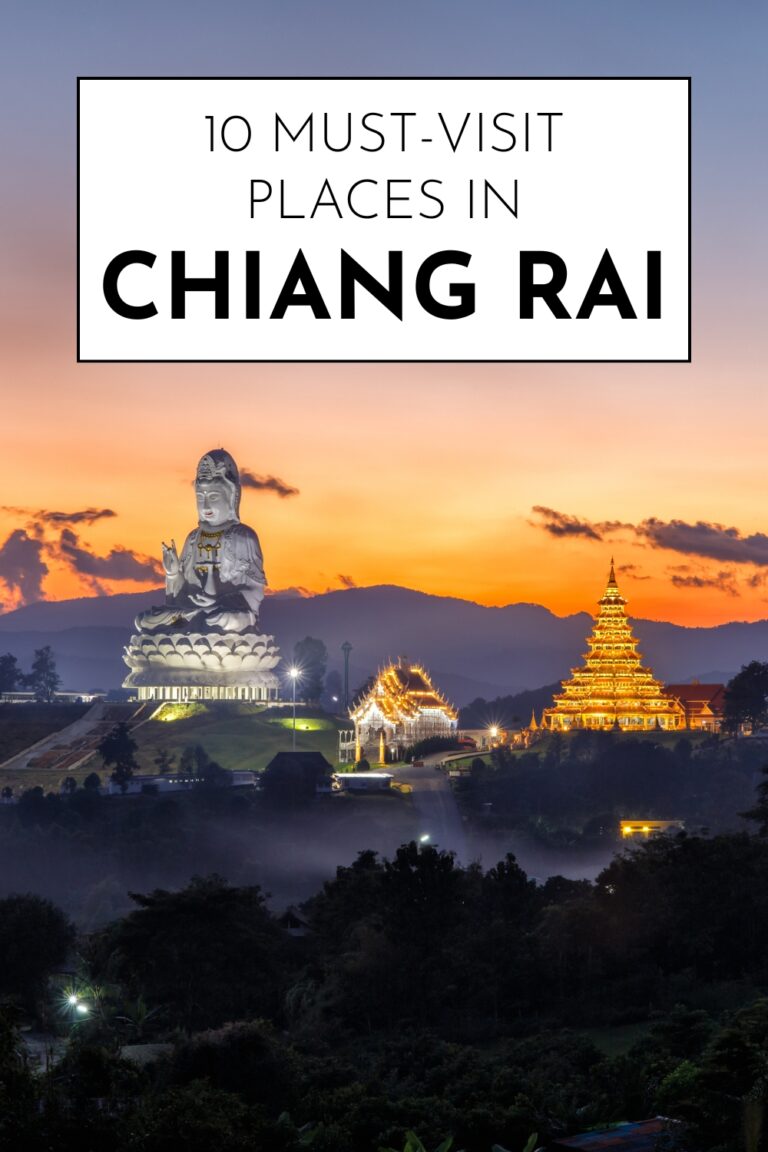Chiang Rai, Thailand’s northernmost province, is a captivating destination that blends ancient traditions with stunning natural beauty. Often overshadowed by its famous neighbor Chiang Mai, this hidden gem offers travelers an authentic taste of northern Thai culture, breathtaking temples, and pristine landscapes.
From the world-famous White Temple to the mysterious Golden Triangle, Chiang Rai provides an incredible mix of cultural landmarks, spiritual sites, and natural wonders. The province serves as a gateway to the hill tribes of northern Thailand and offers some of the country’s most unique architectural marvels.
Whether you’re drawn to ornate temples, seeking adventure in mountainous terrain, or wanting to explore Thailand’s rich cultural heritage, Chiang Rai delivers experiences that will leave lasting memories. The region’s cooler climate, friendly locals, and relatively fewer crowds make it perfect for travelers seeking both discovery and tranquility.
Let’s explore the ten most spectacular destinations that make Chiang Rai an essential stop on any Thailand itinerary.
1. Wat Rong Khun (White Temple) – Architectural Marvel
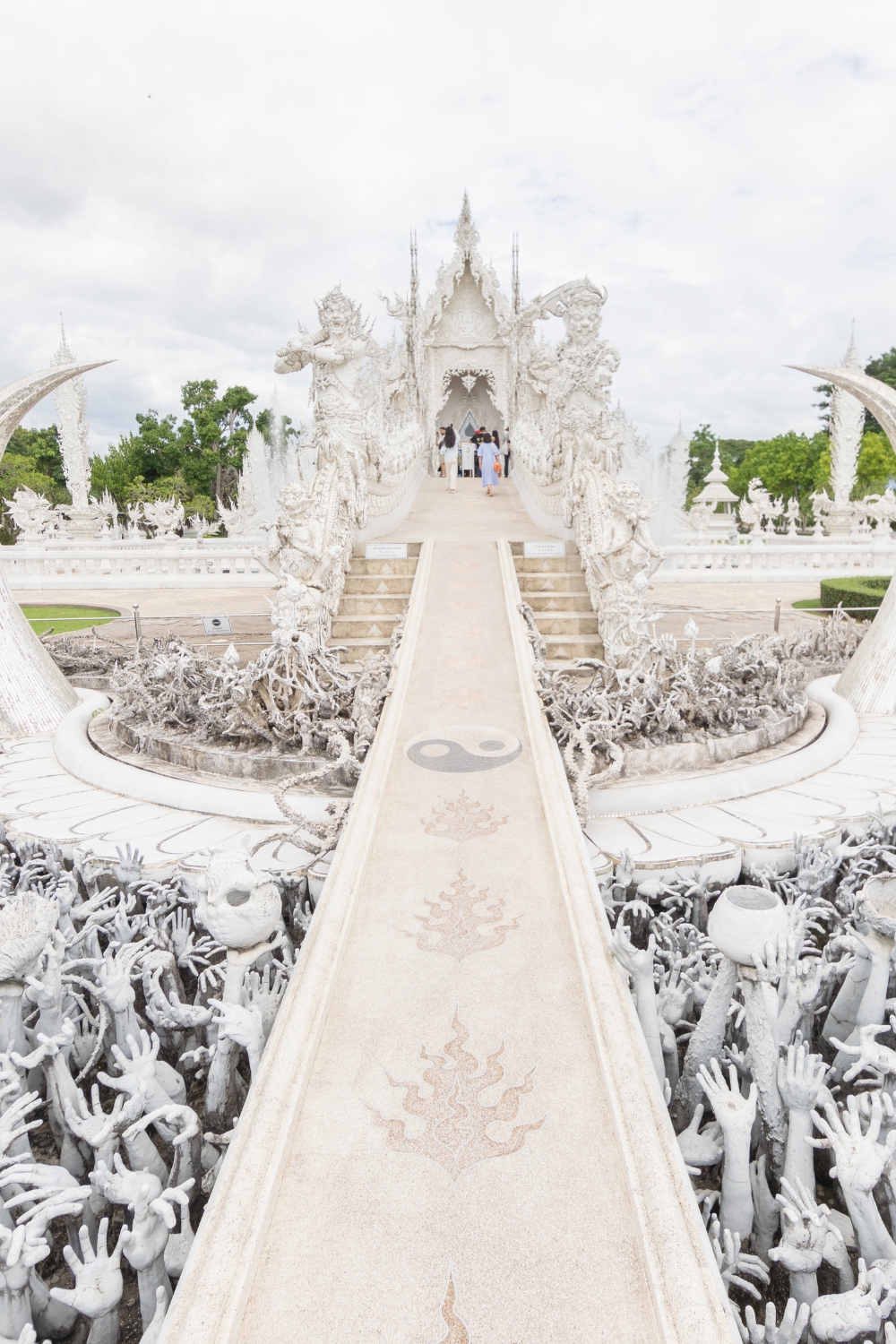
Wat Rong Khun, commonly known as the White Temple, stands as one of Thailand’s most photographed and discussed religious sites. This contemporary Buddhist temple, designed by artist Chalermchai Kositpipat, breaks all traditional temple design rules with its striking white exterior and intricate mirror details.
Modern Art Meets Traditional Spirituality
What makes this temple extraordinary is its fusion of traditional Buddhist imagery with contemporary pop culture references. The main hall features murals depicting everything from ancient Buddhist stories to modern icons like Neo from The Matrix and Michael Jackson.
The temple’s pure white color symbolizes Buddha’s purity, while the embedded mirrors represent wisdom. Visitors cross a bridge over a sea of reaching hands, symbolizing desire and suffering, before entering the main hall.
The project began in 1997 and remains ongoing, with plans for nine buildings total. Currently, visitors can explore the main hall, golden restrooms, and art gallery.
Best time to visit: Early morning (8:00 AM) or late afternoon to avoid crowds and heat
Entry fee: Free (donations welcome)
Must-see features: Main hall murals, bridge of rebirth, golden restroom building
2. Wat Rong Suea Ten (Blue Temple) – Sapphire Sanctuary
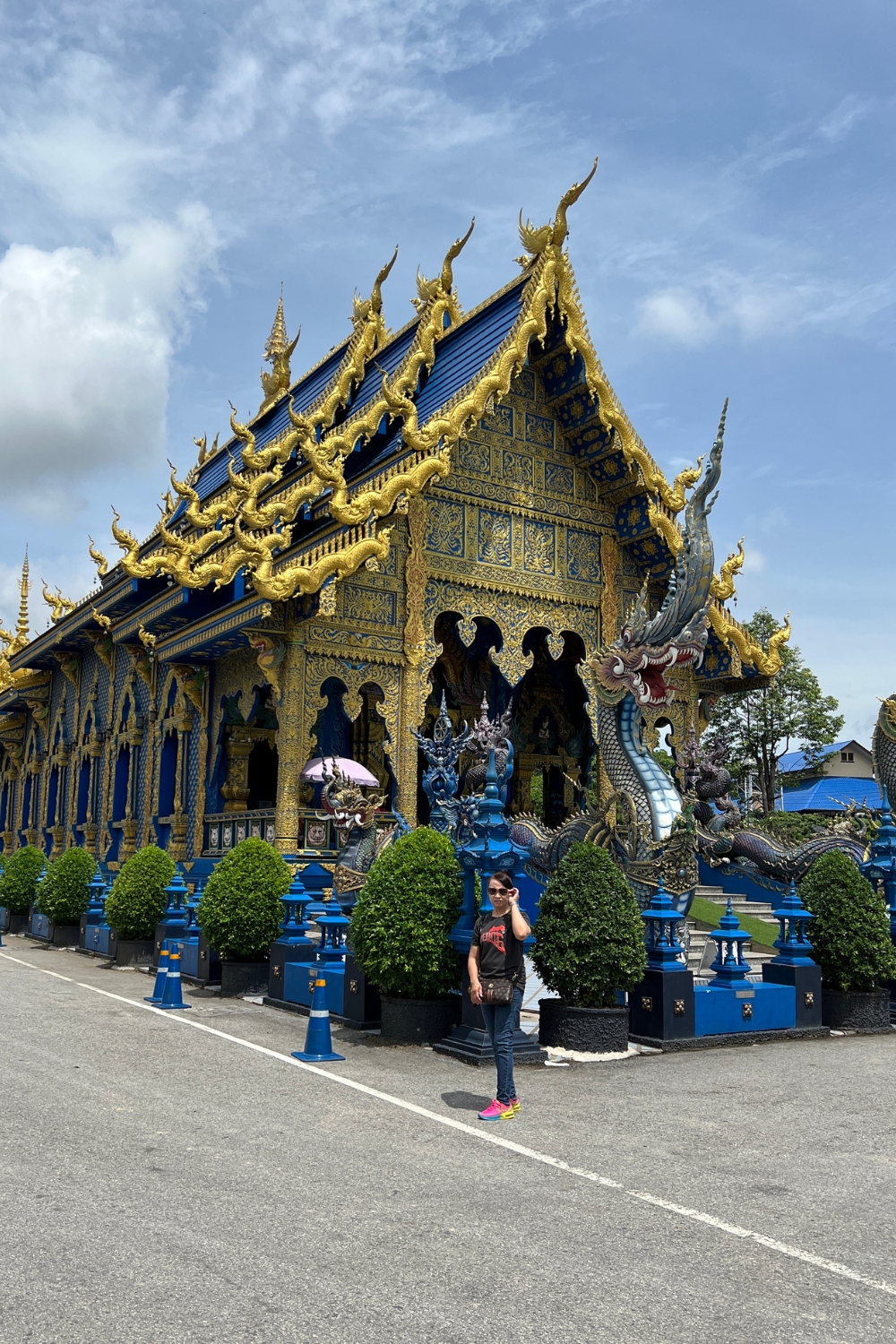
The Blue Temple, officially known as Wat Rong Suea Ten, is a relatively new addition to Chiang Rai’s temple circuit. Completed in 2016, this stunning temple showcases vibrant blue and gold colors that create a mesmerizing visual experience.
Contemporary Design with Traditional Elements
The temple was designed by a student of the White Temple’s creator, carrying forward the tradition of contemporary Buddhist art. The deep blue exterior represents the infinite wisdom of Buddha, while gold accents symbolize enlightenment.
Inside the main hall, visitors encounter a magnificent white Buddha statue surrounded by intricate blue and gold murals. The artwork depicts traditional Buddhist stories with remarkable detail and craftsmanship.
The temple grounds also feature beautiful gardens and smaller shrines, making it perfect for peaceful contemplation and photography.
Best time to visit: 6:00 AM – 6:00 PM daily
Photography: Allowed with respect for worshippers
Highlights: Main Buddha statue, ceiling murals, temple gardens
3. Golden Triangle – Historic Border Region
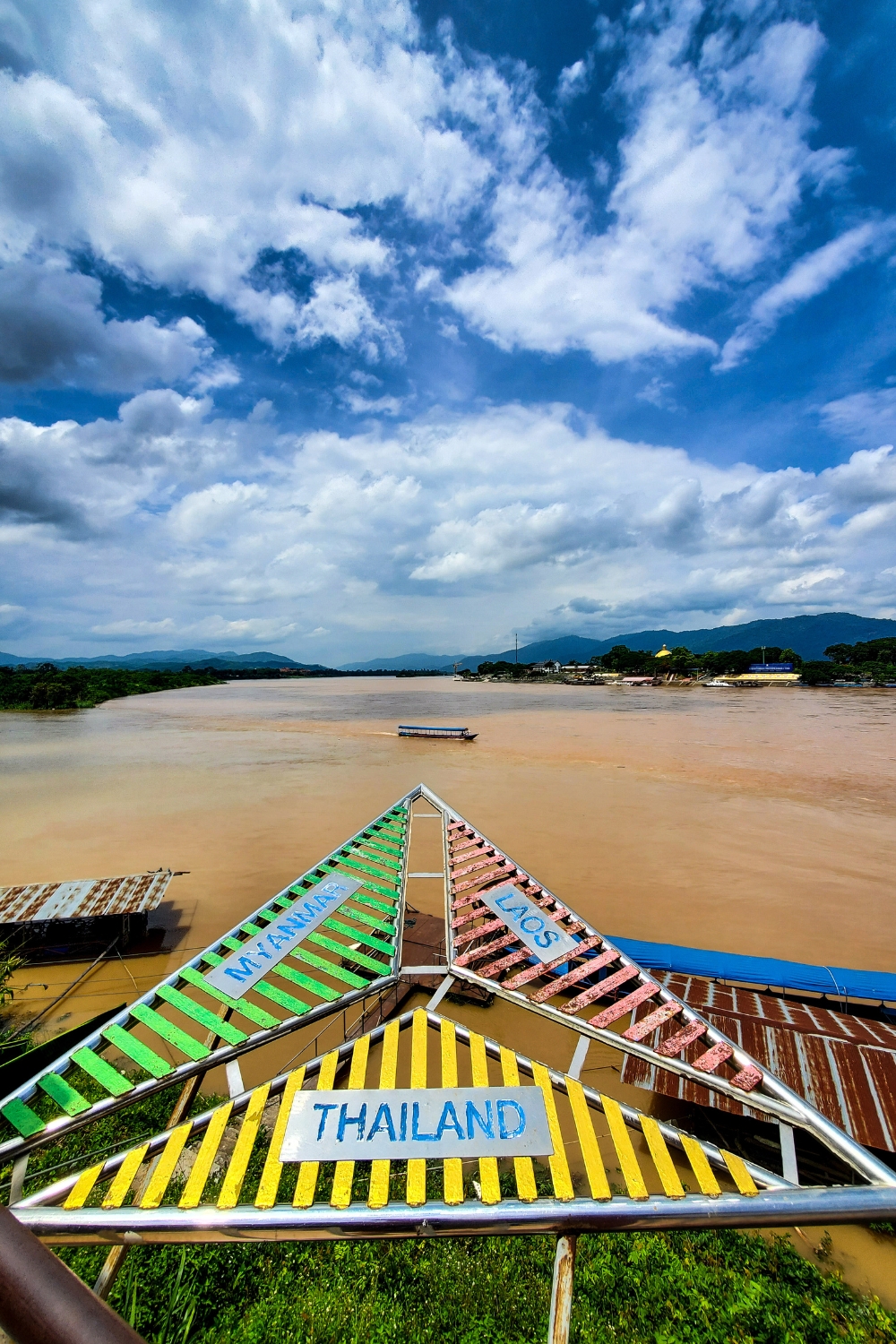
The Golden Triangle represents the meeting point of Thailand, Myanmar, and Laos along the Mekong River. This historically significant region was once the heart of the world’s opium trade and now serves as a fascinating cultural and educational destination.
Cultural Heritage and River Views
The area offers spectacular views where three countries converge, marked by the giant golden Buddha statue overlooking the Mekong River. Visitors can take boat trips along the river and even visit the Laotian border market on Don Sao Island.
The Hall of Opium Museum provides comprehensive insights into the region’s complex history with the opium trade, featuring interactive exhibits and historical artifacts. The museum presents both the dark history and the region’s transformation into a legitimate agricultural area.
Local villages in the area showcase traditional ways of life, offering authentic cultural experiences and handmade crafts.
Best activities: Mekong River boat trips, museum visits, border market shopping
Operating hours: 8:30 AM – 5:00 PM
Special experiences: Three-country viewpoint, traditional longtail boat rides
4. Wat Huay Pla Kang – Temple of the Big Buddha
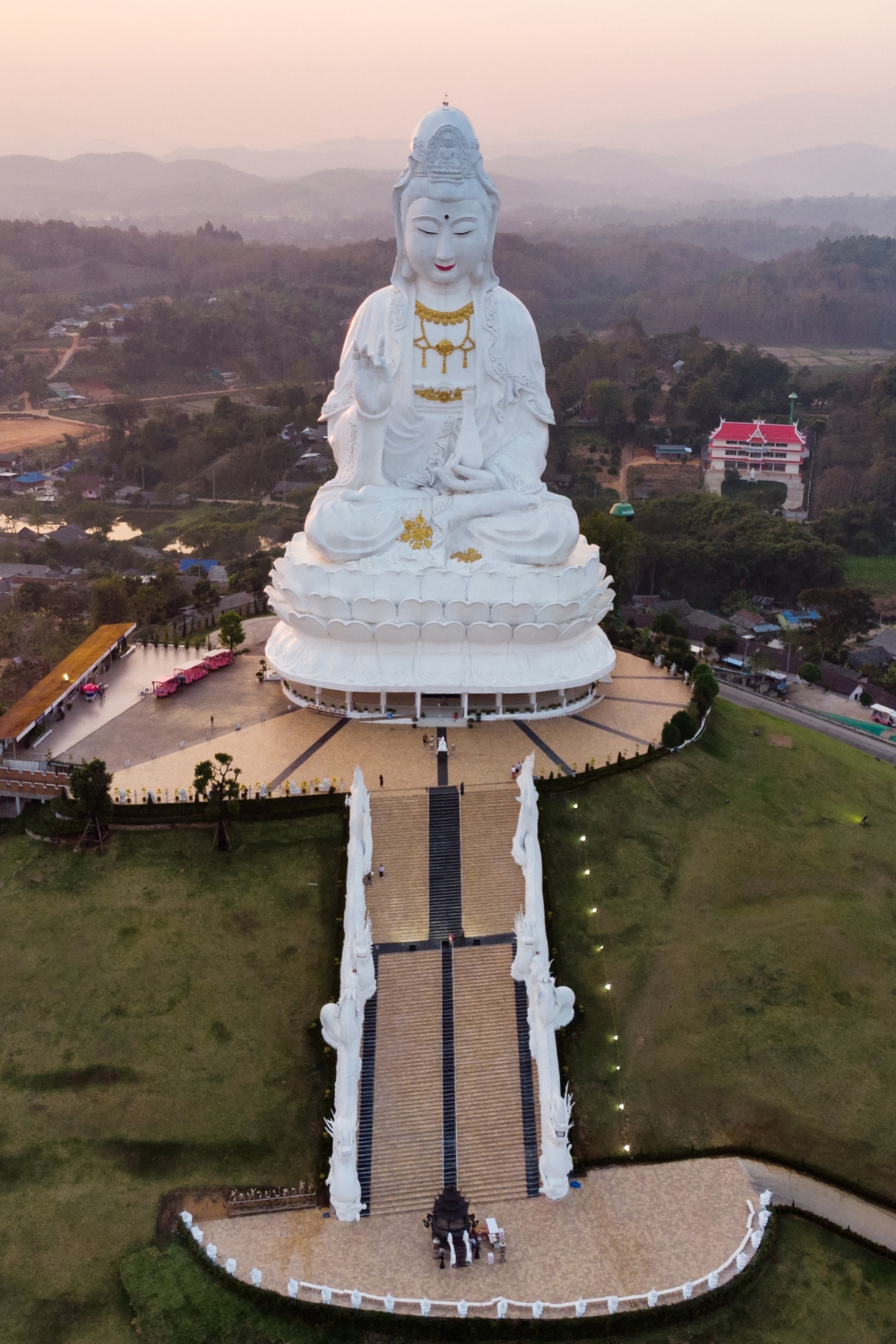
Wat Huay Pla Kang features the largest Buddha statue in Thailand, standing majestically at 69 meters tall. This impressive temple complex offers panoramic views of Chiang Rai and houses beautiful architecture that blends Chinese and Thai influences.
Monumental Buddha and Cultural Fusion
The giant white Buddha statue, known as the “Big Buddha of the North,” can be seen from kilometers away. Visitors can take an elevator inside the statue to observation decks that provide breathtaking 360-degree views of the countryside.
The temple complex includes a striking nine-story pagoda with intricate designs and a main temple hall featuring elaborate decorations. The architecture reflects the area’s diverse cultural influences, including Chinese, Thai, and Burmese elements.
The temple grounds are spacious and well-maintained, perfect for exploring at a leisurely pace. The site attracts both pilgrims and tourists seeking spiritual experiences and stunning photography opportunities.
Elevator hours: 8:00 AM – 5:00 PM
Entrance fee: Small donation requested
Best views: Buddha statue observation deck, pagoda upper levels
5. Baan Dam Museum (Black House) – Dark Art Collection
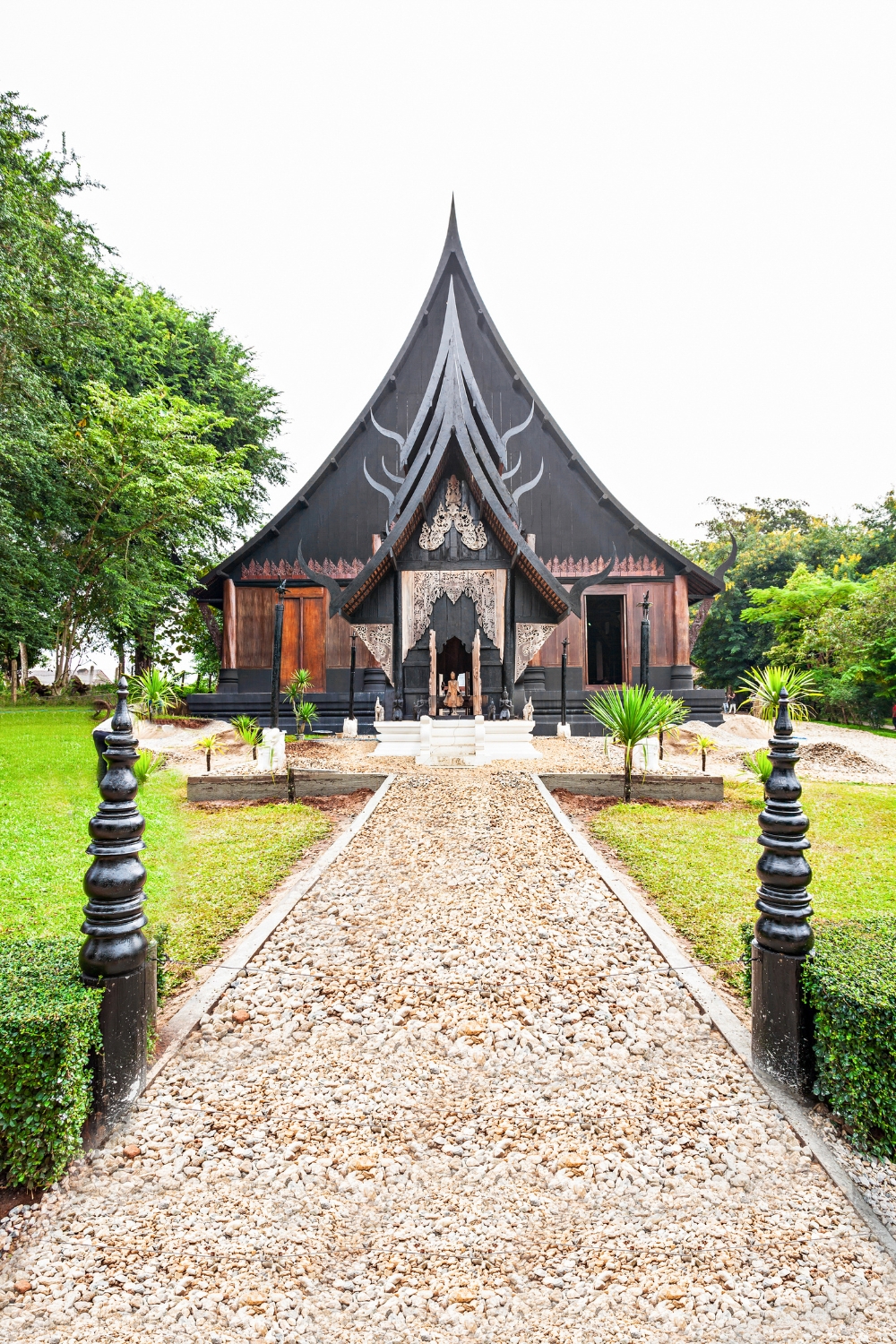
The Baan Dam Museum, also known as the Black House, presents a stark contrast to Chiang Rai’s white and blue temples. Created by national artist Thawan Duchanee, this collection of dark wooden structures houses unusual art pieces and artifacts.
Artistic Expression and Cultural Commentary
The museum consists of over 40 black buildings scattered across beautifully landscaped grounds. Each structure contains different collections ranging from animal bones and pelts to traditional northern Thai artifacts and contemporary art pieces.
Thawan Duchanee’s work explores themes of death, spirituality, and human nature through provocative installations. The artist’s philosophy challenges visitors to confront mortality and consider deeper spiritual questions.
The main building features an impressive collection of animal skulls, traditional weapons, and furniture made from natural materials. The architecture itself represents traditional Lanna style adapted for artistic expression.
Opening hours: 9:00 AM – 5:00 PM daily
Guided tours: Available in multiple languages
Photography: Permitted in most areas
6. Doi Tung Royal Villa and Mae Fah Luang Garden
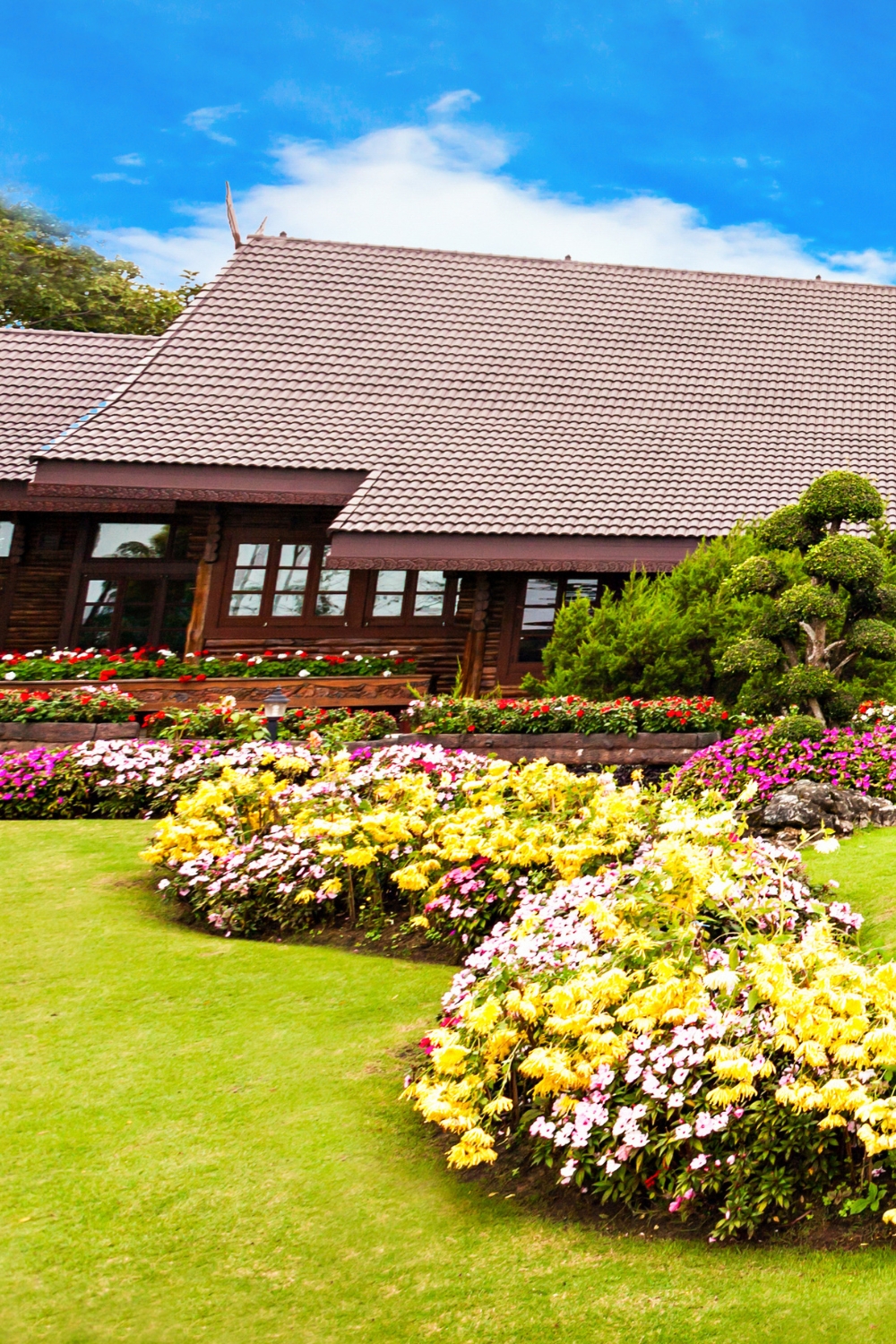
Doi Tung Royal Villa was the residence of the late Princess Mother, who spearheaded development projects in northern Thailand. The site now serves as a museum and botanical garden showcasing royal initiatives and stunning mountain views.
Royal Heritage and Mountain Beauty
The villa itself represents traditional Lanna architecture adapted for modern comfort. Visitors can tour the preserved living spaces and learn about the Princess Mother’s work in transforming the region from opium cultivation to sustainable agriculture.
Mae Fah Luang Garden surrounds the villa with meticulously maintained flower beds, fountains, and walking paths. The garden features both native and international plant species, creating a colorful display throughout the year.
The location offers excellent views of the surrounding mountains and valleys. The cool mountain air provides a refreshing break from Thailand’s typical heat, especially during the cooler months.
Best time to visit: November to February for coolest weather
Garden highlights: Seasonal flower displays, mountain viewpoints
Cultural significance: Royal development project showcase
7. Chiang Rai Night Bazaar – Cultural Shopping Experience
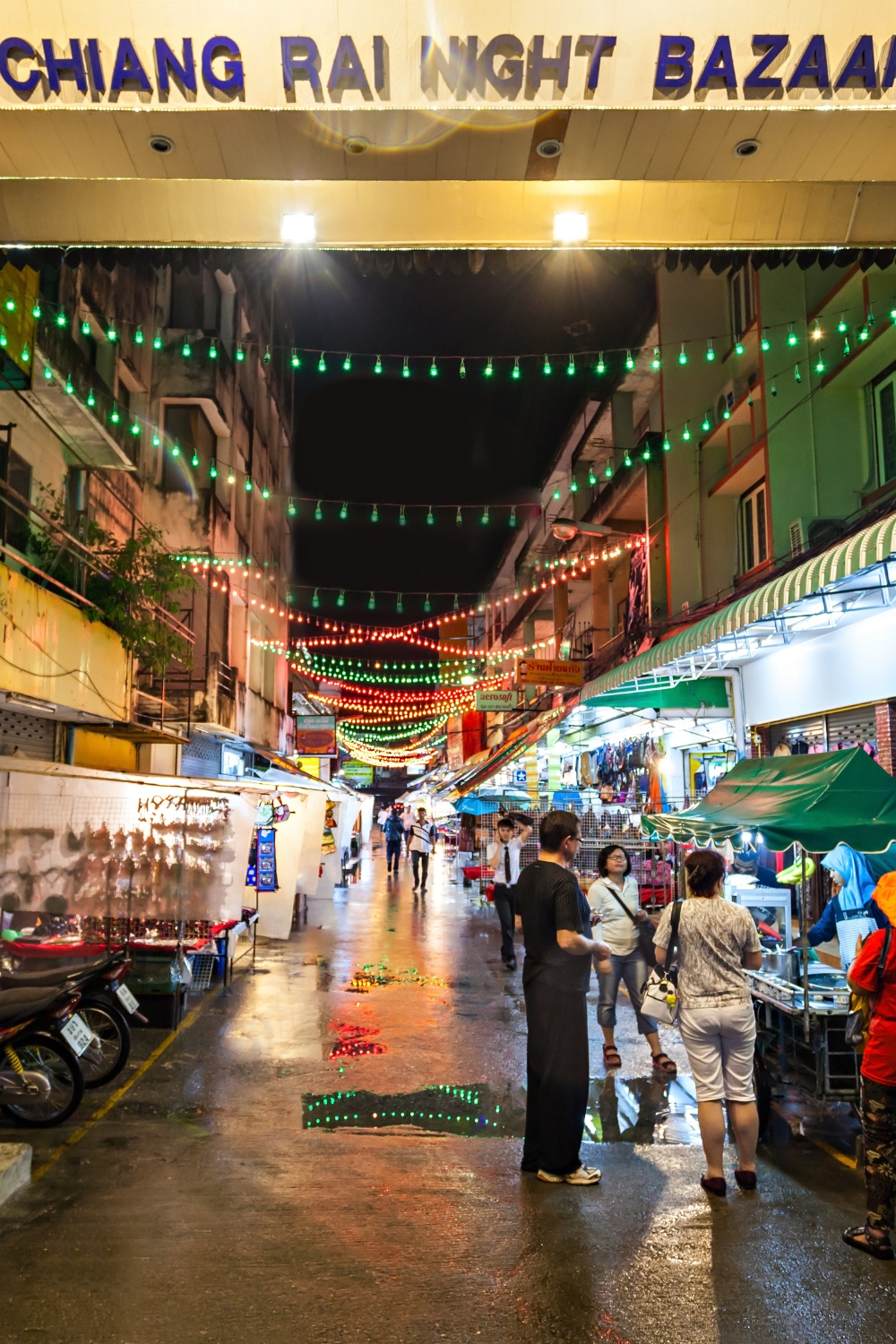
The Chiang Rai Night Bazaar comes alive every evening, offering visitors an authentic taste of local culture, cuisine, and craftsmanship. This vibrant market provides excellent opportunities to interact with locals and discover unique souvenirs.
Local Crafts and Street Food Paradise
The bazaar features hundreds of stalls selling everything from handwoven textiles and hill tribe crafts to modern fashion and electronics. Local artisans demonstrate traditional techniques and sell authentic products directly to visitors.
Food stalls throughout the market serve both local specialties and familiar Thai dishes. Popular options include khao soi (northern Thai curry noodles), grilled meats, fresh fruit, and traditional desserts.
The atmosphere is lively but relaxed, with live music performances and cultural shows adding to the entertainment. Bargaining is expected and part of the fun shopping experience.
Operating hours: 6:00 PM – 11:00 PM daily
Best purchases: Hill tribe textiles, local handicrafts, street food
Payment: Cash preferred, some vendors accept cards
8. Singha Park – Agricultural Adventure
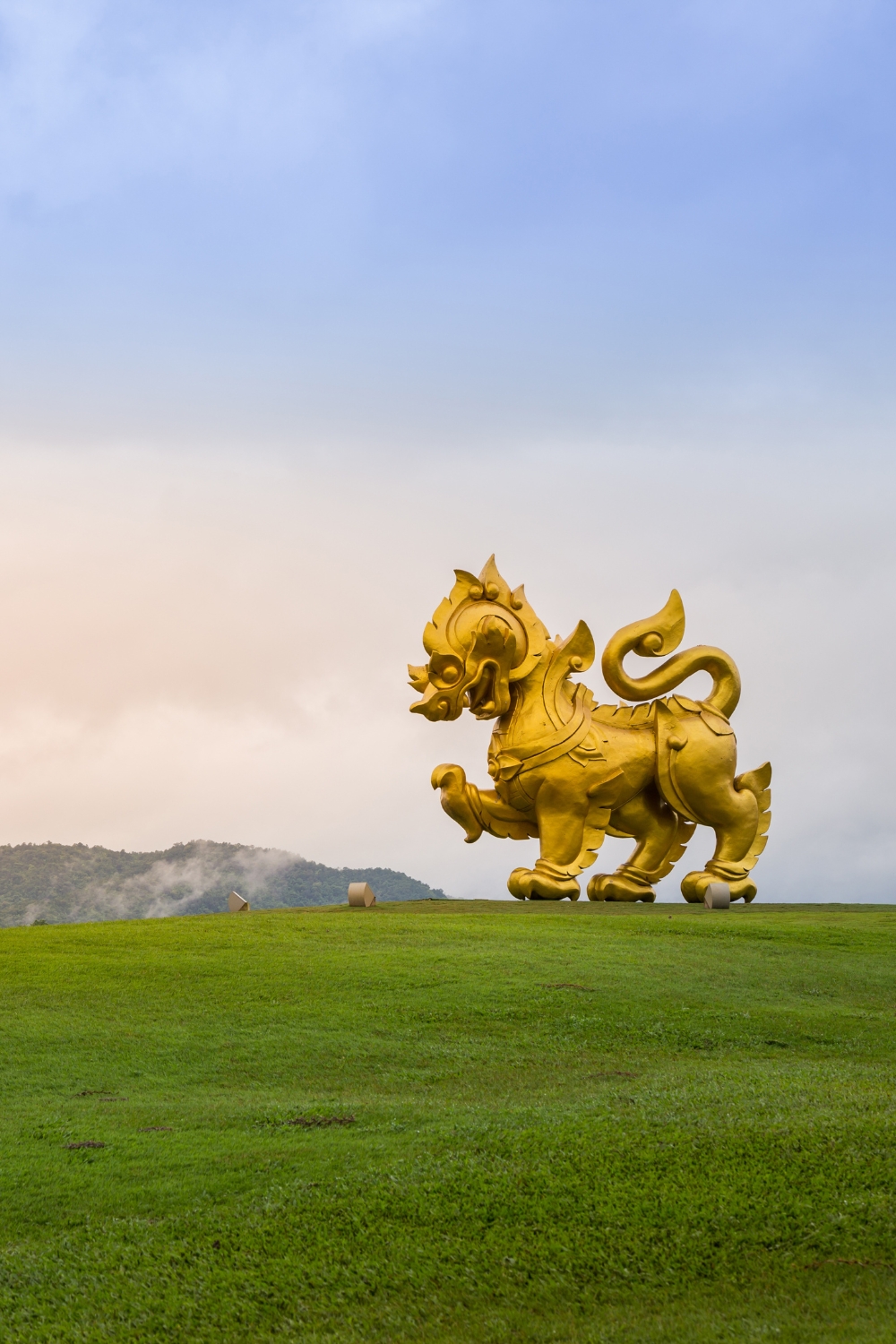
Singha Park spans over 8,000 acres of agricultural land converted into a recreational and educational destination. The park showcases sustainable farming practices while providing fun activities for visitors of all ages.
Farm-to-Table Experiences and Outdoor Activities
The park features tea plantations, fruit orchards, and flower gardens that visitors can explore on foot, by bicycle, or via the park’s tram system. Guided tours explain sustainable agriculture practices and the farm-to-table concept.
Popular activities include zip-lining, hot air balloon rides (seasonal), and ATV adventures through the countryside. The park also offers bicycle rentals for self-guided exploration of the vast grounds.
The on-site restaurants serve fresh produce grown in the park, providing true farm-to-table dining experiences. The park’s brewery offers tours and tastings of locally produced beverages.
Entry fee: Free (activity fees separate)
Best activities: Bicycle tours, zip-lining, farm visits
Seasonal highlights: Flower blooms (cool season), fruit harvesting
9. Wat Phra Kaew (Temple of the Emerald Buddha)
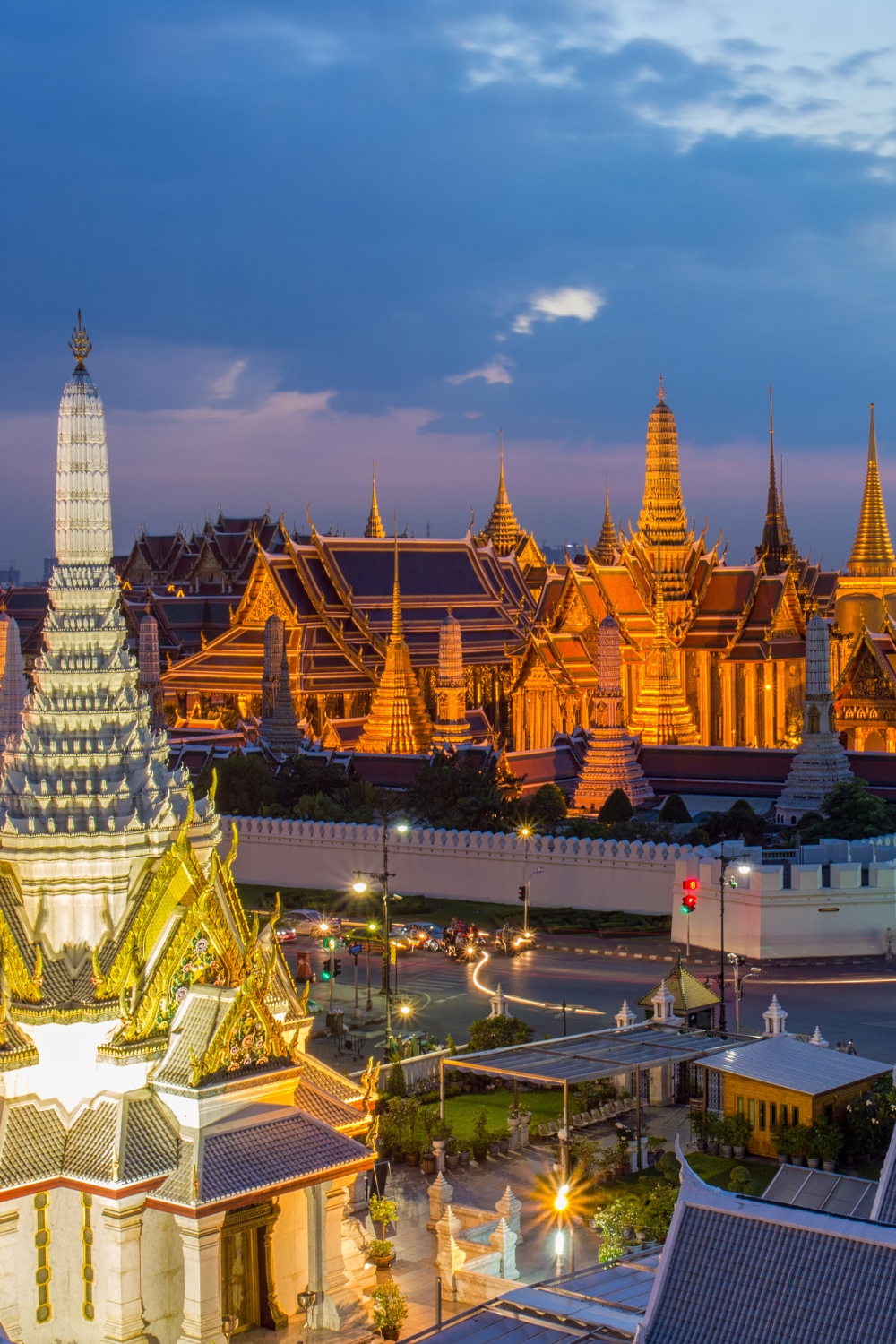
Wat Phra Kaew in Chiang Rai holds special significance as the original home of Thailand’s most sacred Buddha image, the Emerald Buddha. While the statue now resides in Bangkok, this temple remains an important pilgrimage site and historical landmark.
Sacred History and Architectural Beauty
The temple’s history dates back to 1434 when lightning struck the chedi, revealing the hidden Emerald Buddha statue. The discovery led to the temple’s fame and importance in Thai Buddhist history.
Today’s temple features beautiful Lanna-style architecture with intricate woodcarvings, colorful murals, and peaceful gardens. The main hall houses a replica of the Emerald Buddha, allowing visitors to appreciate the statue’s significance.
The temple grounds include a museum displaying artifacts related to the Emerald Buddha’s history and Buddhist art. The peaceful atmosphere makes it ideal for meditation and contemplation.
Historical significance: Original home of the Emerald Buddha
Architecture style: Traditional Lanna
Best time to visit: Early morning for peaceful atmosphere
10. Phu Chi Fa – Sunrise Mountain Viewpoint
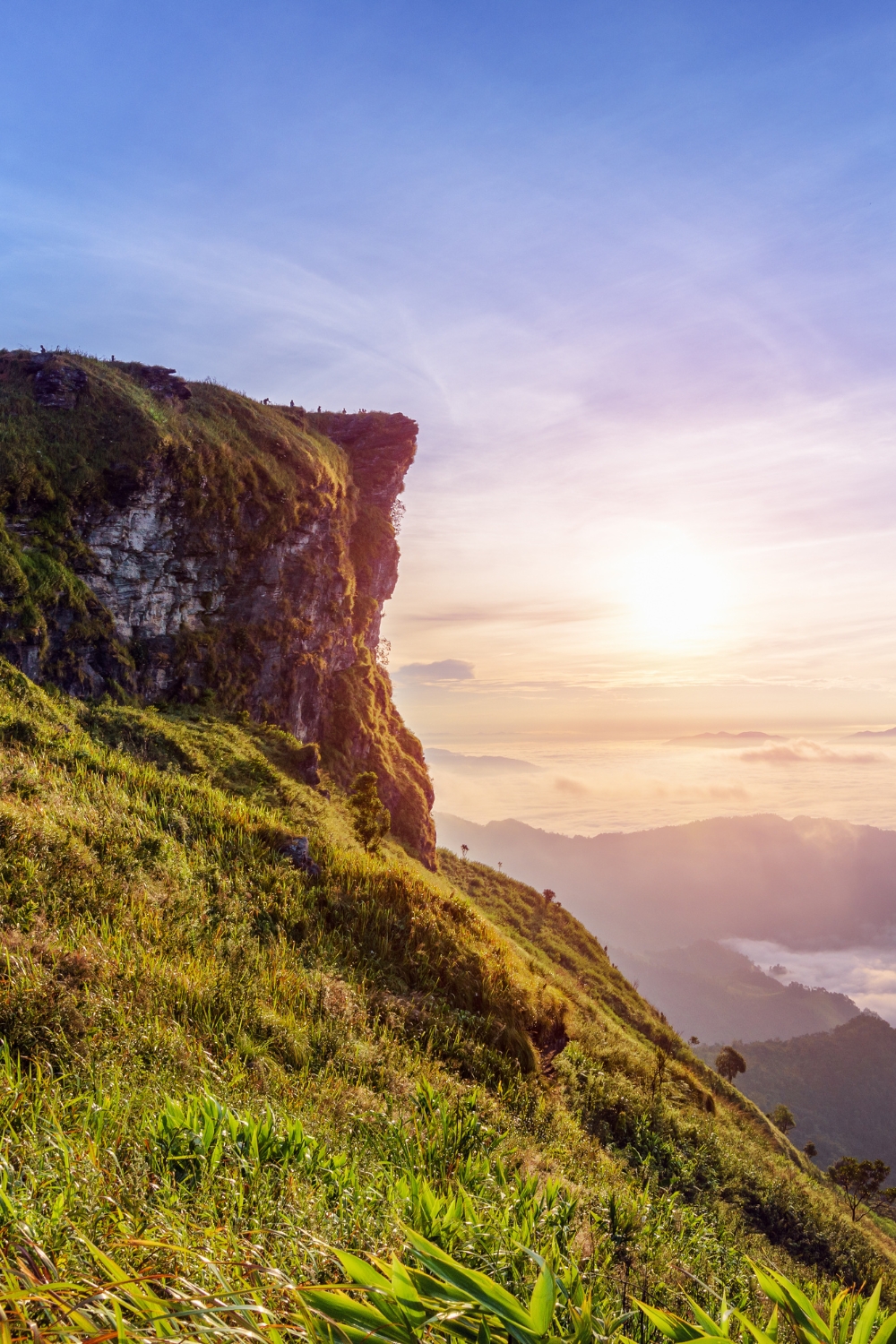
Phu Chi Fa offers one of northern Thailand’s most spectacular sunrise viewpoints, located along the Thai-Laos border. This mountain destination attracts visitors seeking natural beauty and breathtaking panoramic views.
Natural Wonder and Border Views
The mountain’s name means “pointing to the sky,” perfectly describing the rocky outcrops that seem to reach toward the heavens. The sunrise views from the summit are considered among Thailand’s most beautiful, with rolling mountains and morning mist creating magical scenery.
The area features unique rock formations, wildflower meadows (seasonal), and walking trails suitable for various fitness levels. The cool mountain climate provides a refreshing contrast to Thailand’s typical heat.
Local hill tribe villages near the mountain offer cultural experiences and homestay opportunities. These communities maintain traditional lifestyles and welcome respectful visitors.
Best time to visit: November to February (cool and clear)
Sunrise viewing: 5:30 AM – 7:00 AM
Accommodation: Local guesthouses and camping options available
Planning Your Chiang Rai Adventure
Getting Around the Province
Chiang Rai is well-connected by road, with rental cars, motorcycles, and local songthaews (shared taxis) providing transportation between attractions. Many visitors prefer organized tours for distant destinations like Phu Chi Fa or Golden Triangle.
The city center is compact and walkable, with most temples and markets within easy reach. Bicycle rentals offer an eco-friendly way to explore local attractions at your own pace.
Best Time to Visit Different Attractions
Cool Season (November to February): Perfect weather for all activities, especially mountain destinations and outdoor exploration
Hot Season (March to May): Early morning and late afternoon visits recommended for outdoor attractions
Rainy Season (June to October): Lush landscapes but some mountain roads may be challenging
Essential Tips for Travelers
Dress modestly when visiting temples, covering shoulders and knees. Remove shoes before entering temple buildings and show respect during religious ceremonies.
Carry cash for local markets and small vendors, though credit cards are accepted at major attractions and restaurants. ATMs are readily available throughout the city.
Learn basic Thai phrases for greetings and thanks, as locals appreciate the effort and it enhances cultural interactions.
Conclusion
Chiang Rai offers an incredible diversity of experiences that showcase the best of northern Thailand’s culture, history, and natural beauty. From the artistic brilliance of the White and Blue temples to the historical significance of the Golden Triangle, from mountain sunrises to vibrant night markets, each destination provides unique insights into this fascinating region.
These ten must-visit places represent the highlights of what makes Chiang Rai special, but they’re just the beginning of what this province offers. The genuine warmth of local people, the rich cultural heritage, and the stunning natural landscapes combine to create experiences that resonate long after your visit ends.
Whether you’re seeking spiritual enlightenment, cultural immersion, artistic inspiration, or natural wonder, Chiang Rai provides the perfect setting for meaningful travel experiences. The province’s manageable size allows visitors to explore multiple attractions while maintaining a relaxed pace that encourages deeper cultural appreciation.
Start planning your Chiang Rai adventure today, and prepare to discover why this northern Thai province is increasingly recognized as one of Southeast Asia’s most rewarding destinations. From ancient temples to modern art, from mountain peaks to riverside markets, Chiang Rai awaits with open arms and endless possibilities for discovery.
